How to Read Chord and Fretboard Diagrams
Tired of being confused by chord and fretboard diagrams? This article will give you a proper explanation of how to read them so you can learn chords, scales, arpeggios, and more. There are many important shapes and patterns to learn to become an advanced guitarist.
Knowing how to properly visualize the fretboard is the key to unlocking the freedom to play anywhere on the neck. Learning how to read these diagrams is the first step in that direction.
How to Read Chord Diagrams
Here is a blank canvas chord diagram contrasted with the guitar headstock. Notice any similarities?
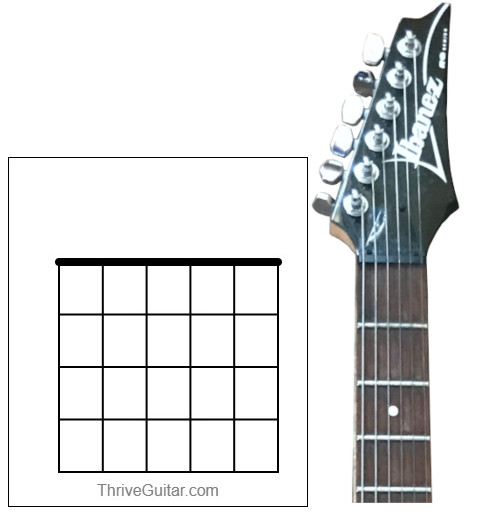
It’s a simple grid, with strings running vertically and frets running horizontally. Let’s take a look at an open D Major chord diagram.
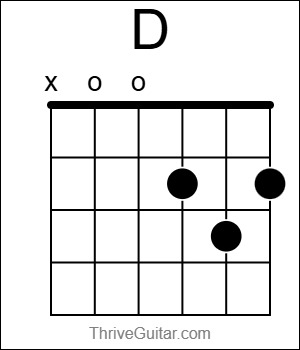
Here is an explanation of everything you see in the diagram above.
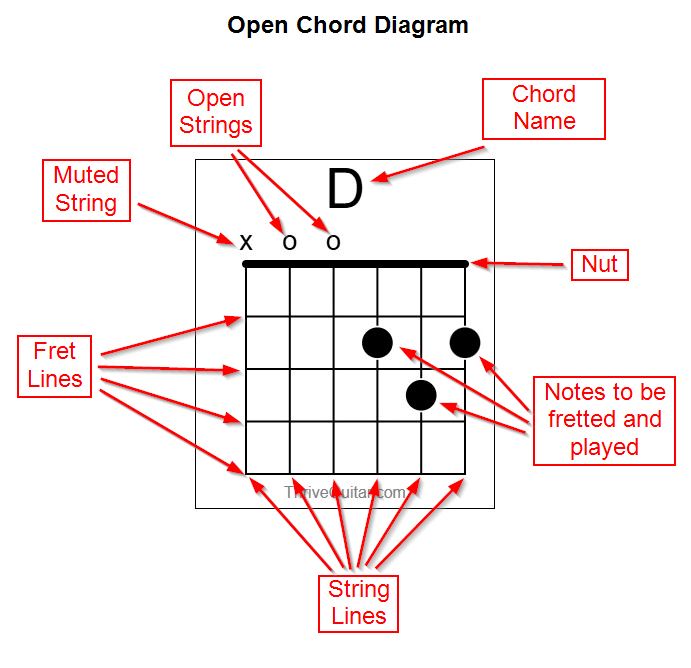
And here is what it looks like in real life.
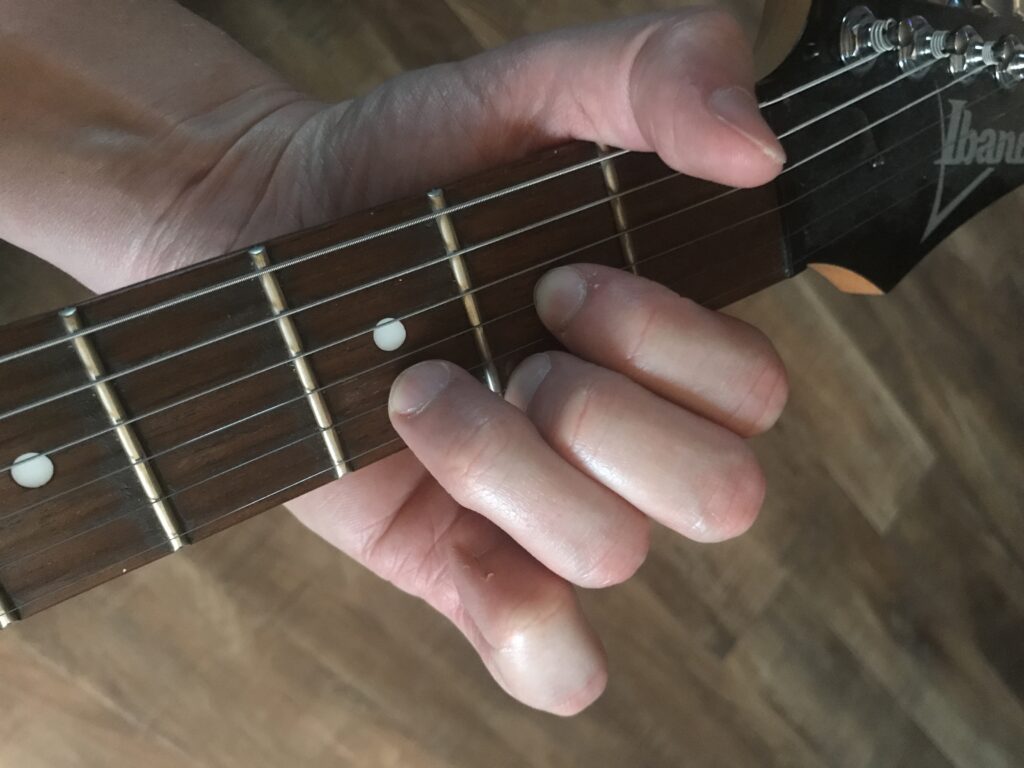
I’m applying a slight bit of muting on the 6th string with my thumb. That’s not always necessary, but it may be a technique you wish to use when it makes sense.
Chord Naming Conventions On Diagrams
- Sometimes major chords will have an “M” or a “Maj” after the letter, but not always. If you don’t see a letter next to the name, assume it is a major chord. (Much like the D chord diagram above).
- Minor chords will have a lower case “m” after the letter.
- Dominant chords will often have a 7, 9, or 13 after them. Example names are a G7, E9, A13, etc.
- Augmented or diminished chords will have “Aug” or “Dim” included in the name.
How about chords played up the neck? Here is a diagram of an EbMaj7 chord.
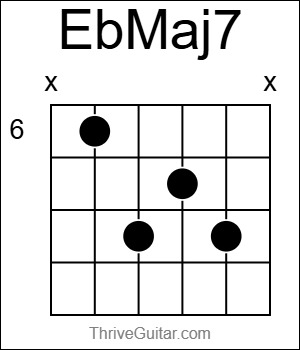
As you can see there is a number 6 on the left side of the grid. This indicates the fret number the note should be played at.
The image below provides a further explanation.
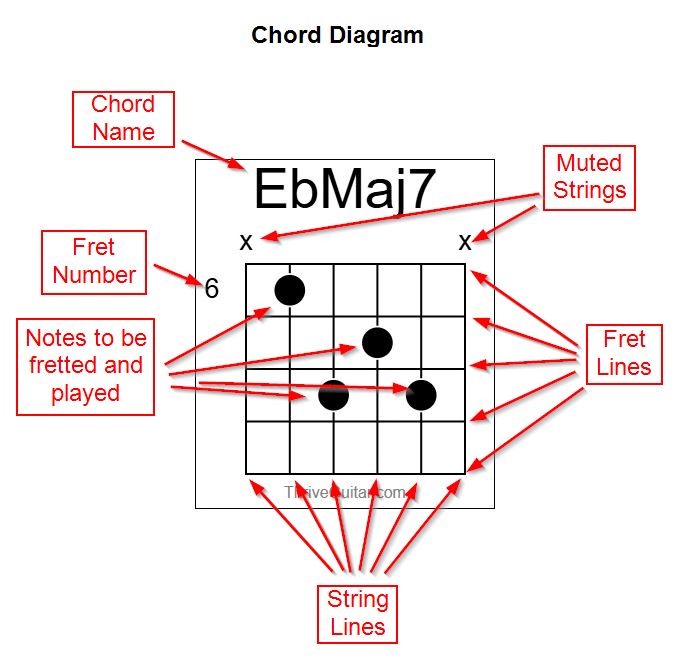
Once again, here is what it actually looks like in real life when played on the guitar.
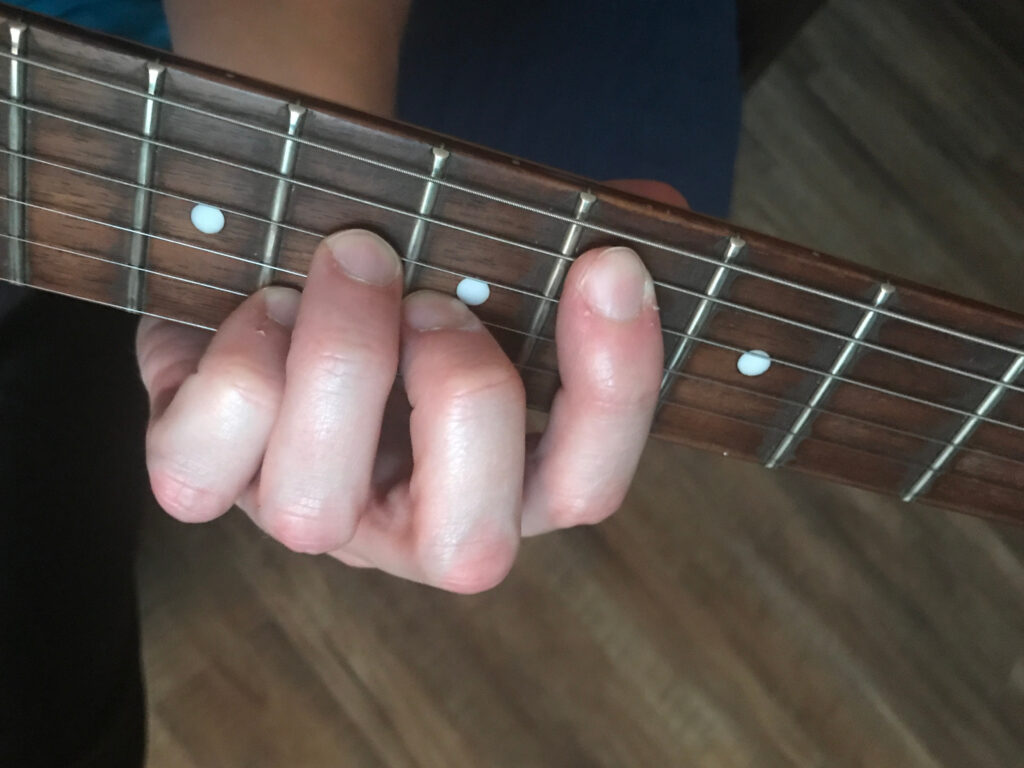
How to Read Fretboard Diagrams
Fretboard diagrams are good for showing scale and arpeggio patterns on the neck. I will use them frequently on this website. They are good for demonstrating patterns that are not possible on a chord diagram.
Here is a blank canvas fretboard diagram contrasted with the guitar neck. Can you see the similarities?
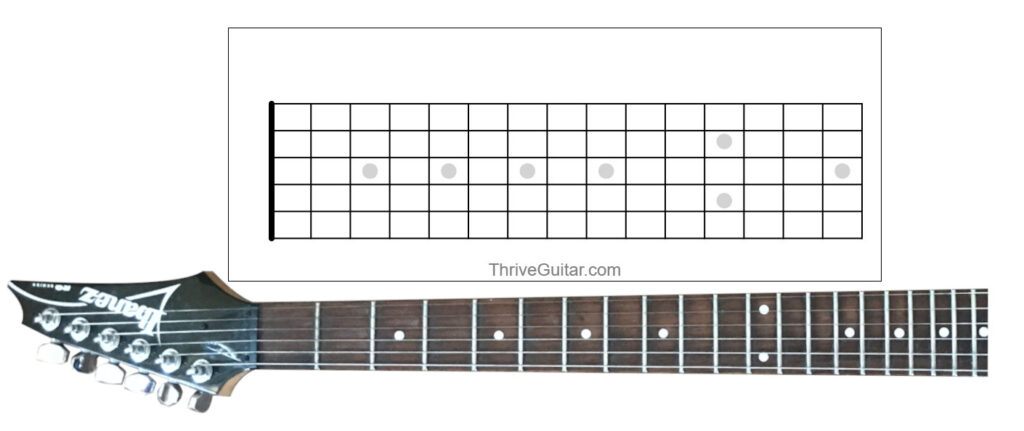
Let’s take a look at this diagram I recently used in an article about how to learn every note on the guitar.

Like the chord diagrams, this fretboard diagram is a grid. The difference is the string lines run horizontally, and the frets run vertically. This is a right-handed guitar fretboard or neck. The nut is on the left side. The diagram indicates what you’d see if you held your guitar in your lap, face up.
The diagram below provides a further explanation.
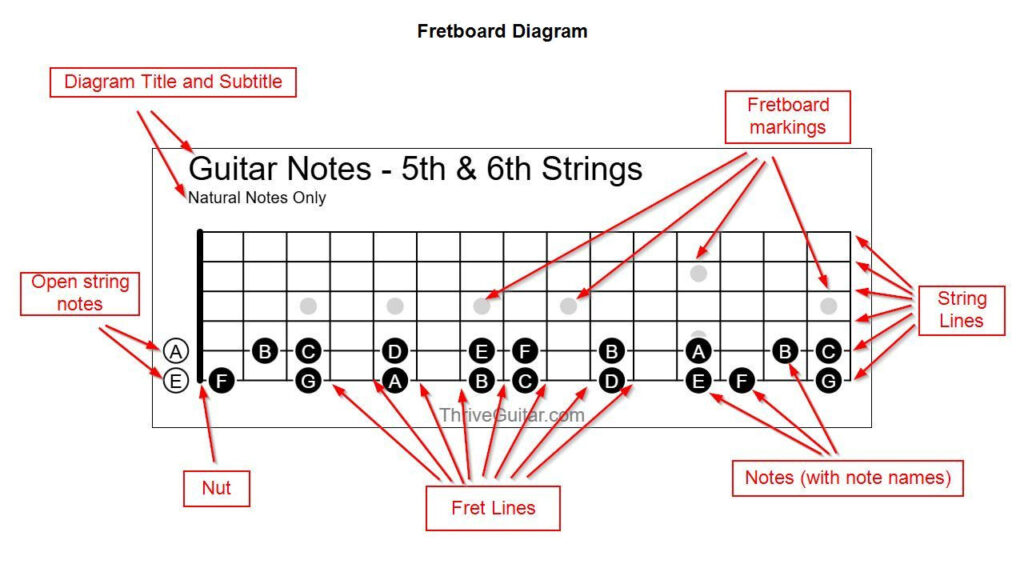
Summary
Learning how to read and understand these chord and fretboard diagrams is crucial to understanding the guitar. Knowing the guitar in great detail is critical to being an advanced guitar player.
Luckily they are not hard to understand once you know what you’re looking at. I hope this article and all of the helper diagrams have helped you gain the understanding you need. Thanks for reading!
